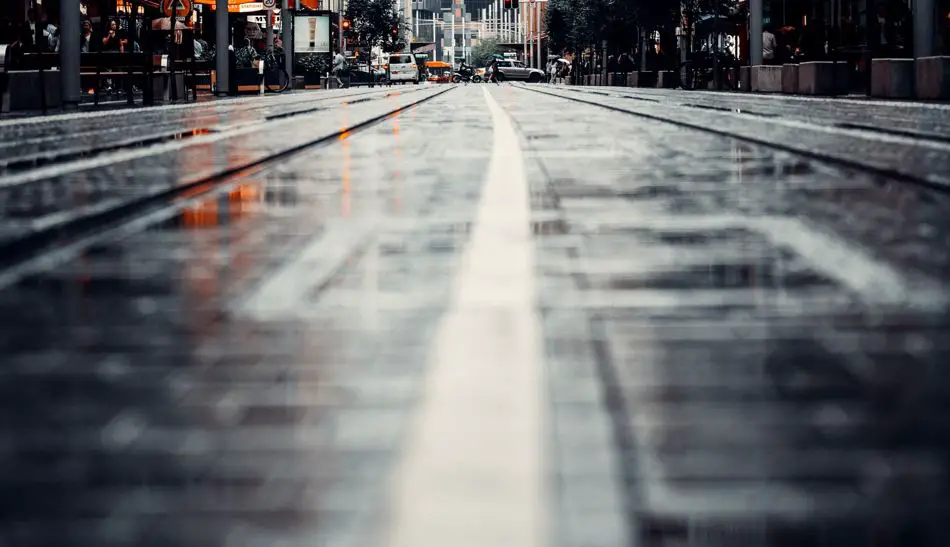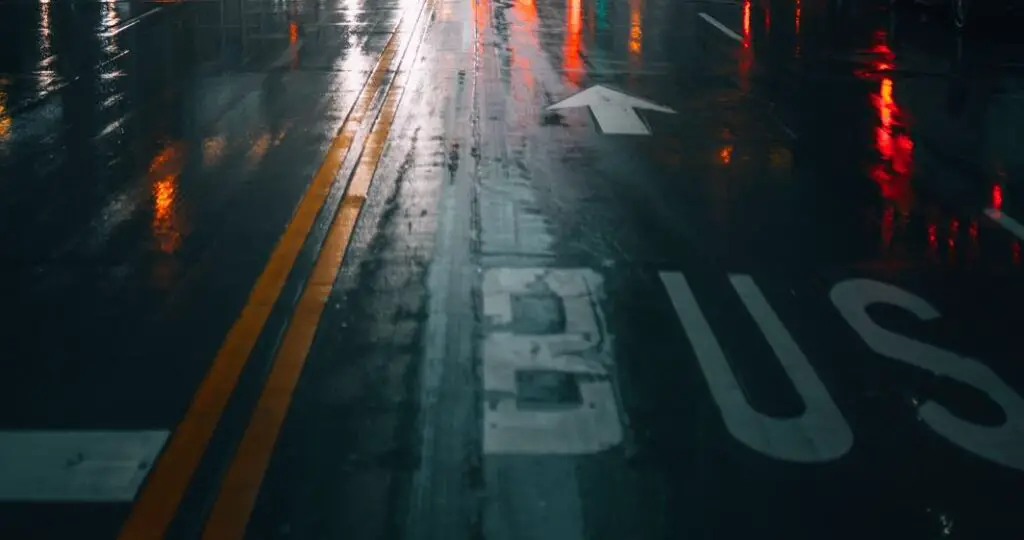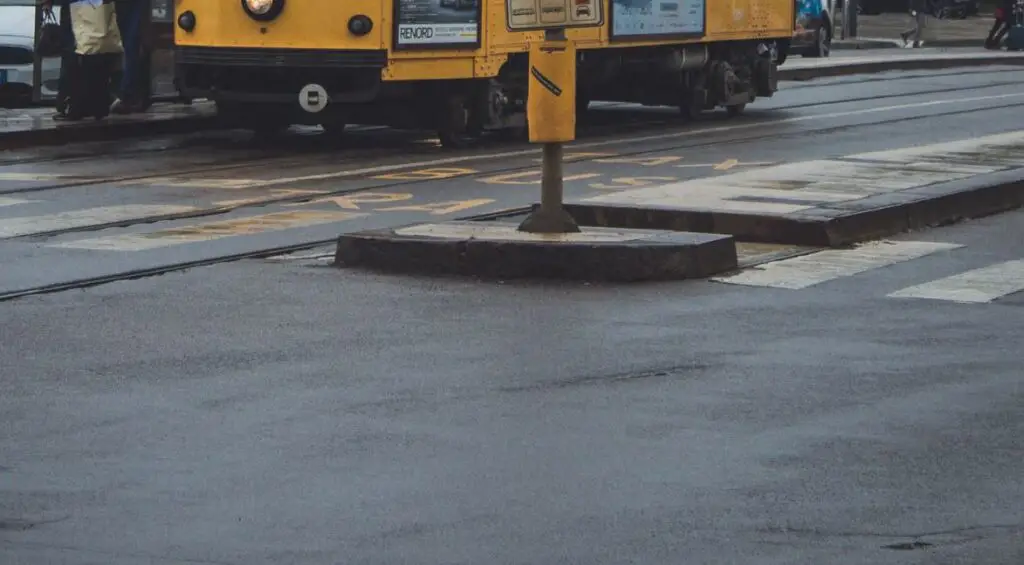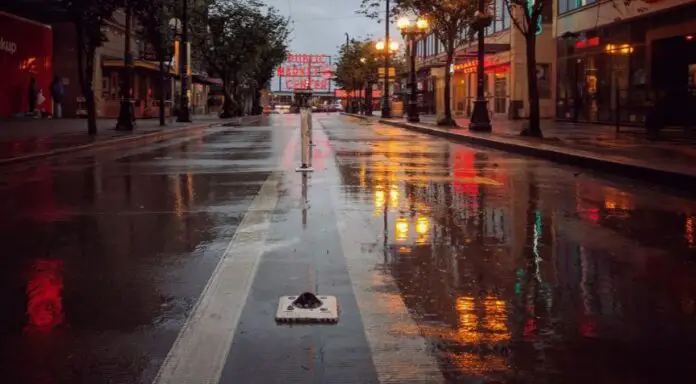There are various lines drawn on the road, but the one you often see is the white line. However, this white line is a place that riders want to avoid because it becomes slippery when it gets wet with rain. In the first place, why does the white line on the road become slippery when it gets wet?
Why is it slippery when the white lines on the road get wet?
Rain-wet roads increase the risk of slipping, but one of the most slippery places is the white line drawn on the road. White lines are drawn in various places on the road, such as the white line on the pedestrian crossing drawn at the intersection, but it is extremely difficult to avoid all the white lines.
So why is it slippery when these white lines on the road get wet?

In the first place, the white line painted on the road for traffic signs on the road surface uses the paint “K5665” defined by Industrial Standards. This is a paint dedicated to road markings and is called “traffic paint”, and has the property of making the surface much smoother than ordinary asphalt. Therefore, the paint used is related to the reason why the white lines on the road are slippery.
The performance required for this traffic paint includes wear resistance and reflected brightness. Among them, the slip resistance value (BPN value) indicates the difficulty of slipping in a wet state. This is measured and quantified by a test device, and it is judged that the larger the numerical value, the less slippery it is. For wet roads, a safe level of 40 BPN or higher is considered.
According to the Road Marking Materials Association, a group of road marking paint manufacturers, the slip resistance value of general asphalt in a wet state is reported to be 40 to 70 BPN, but the traffic paint is 40 to 50 BPN.

As you can see from this figure, the white line is slippery than asphalt when it is wet with rain. In addition, the paint of Traffic Paint has excellent water resistance, and it has less water absorption than asphalt and does not drain well. Therefore, when it rains, a film of water forms on the white line of the pedestrian crossing, and if you try to pass it, you may lose control of the steering wheel and brakes, and there is a risk of hydroplaning.
Especially when it starts to rain, you need to be careful because small mud, oil, dust, etc. on the road surface will float and become slippery. Also, unlike ordinary paint, traffic paint has excellent quick-drying, elasticity, and abrasion resistance so that it can withstand the friction caused by car tires. In addition, various other measures have been taken to protect the safety of drivers and pedestrians.
First, the white lines on the road contain fine glass particles called “glass beads” to improve visibility. These glass beads have the characteristic of strongly reflecting at the same angle when exposed to light. When the light from the headlights of a motorcycle or car hits the pedestrian crossing, it is reflected glitteringly, making it easier for the driver to notice the existence of the pedestrian crossing.
In addition to glass beads, the main raw material for white lines on roads is a mixture of aggregates such as sand, petroleum resin, and colored pigments. The larger the number of glass beads, the more light is reflected, so it seems that the beads are often sprinkled over the line to enhance the reflection before it dries after drawing a white line on the road.
As you can see, the white line is slippery due to the material and the influence of rainwater, but are there any measures or improvements taken to make it less slippery?
This problem has been an issue for some time, and as a countermeasure, measures have been taken such as making the surface of the paint uneven in order to increase the coefficient of friction. However, if the surface is made uneven, the surface will be easily scraped and deterioration will be accelerated, and it may deviate from the JIS standard, so it seems that it cannot be changed easily.
One of the non-slip traffic paints is one with fine streaks (grooving). This is a product called “Rain Flash Groovy” from Atomix Co., Ltd. In addition to normal glass beads, special high-brightness glass beads are sprayed on the paint to improve the visibility at night. I am. In addition, it seems that the slip resistance value is improved by about 15 BPN in each of the vertical and horizontal directions compared to the company’s conventional product due to the inclusion of streaks.
There are eight types of pedestrian crossings that have been put into practical use other than those with streaks, such as large glass beads with irregularities and tiled irregularities.

By the way, besides the white line, there are other places on the road that are slippery when wet with rain. First of all, the manhole cover is especially slippery when it gets wet in the rain, so you need to be careful not to pass over it on rainy days as much as possible. The manhole cover is easy to find in the daytime, but it is difficult to find it at night or in the dim hours of early morning and evening, so it is important to slow down and drive carefully.
In addition, bridges, highway seams, and iron plates for construction are made of iron like manhole covers, so it is a slippery place when it gets wet. Also, the lid of the mesh drainage ditch called grating installed in the gutters and underpasses of the road is very slippery when it gets wet, so be careful.
Other than those installed on the road, the fallen leaves, which increase especially in the fall, become slippery when wet. Great care must be taken when driving on roads with roadside trees, including in the mountains.
Motorcycles that run on two wheels are particularly slippery compared to cars, which can lead to falls and accidents, so it seems that more caution will be required when driving on rainy days.
Numerically, it is clear that the white lines drawn on pedestrian crossings are slippery when wet with rain. In order to increase the frictional resistance, measures such as processing to make the surface less slippery have been taken, but the current situation is that it has not been sufficiently improved.
When riding a motorcycle over a pedestrian crossing on a rainy day, it is important to drive slowly and carefully.


